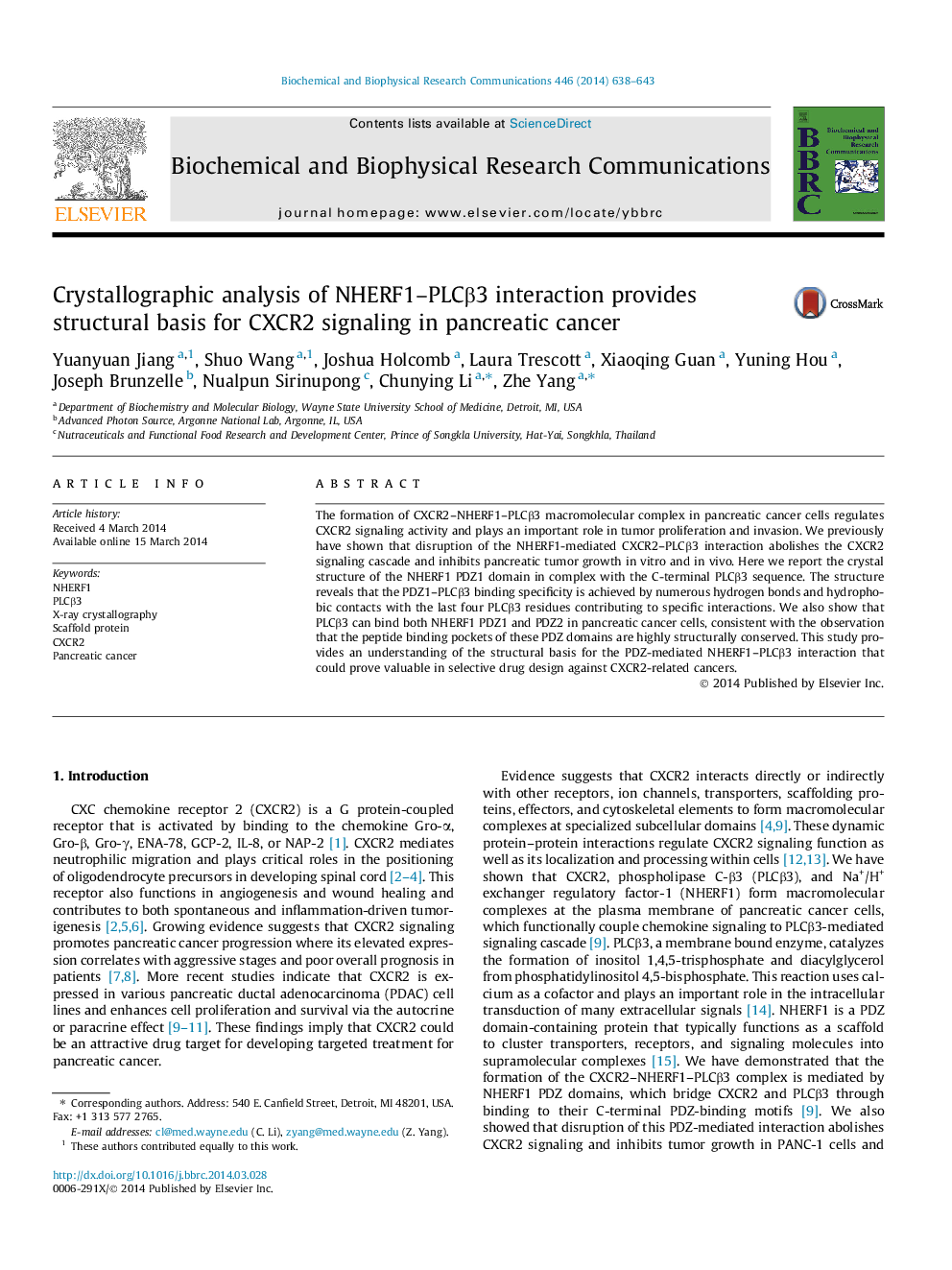| Article ID | Journal | Published Year | Pages | File Type |
|---|---|---|---|---|
| 10755831 | Biochemical and Biophysical Research Communications | 2014 | 6 Pages |
Abstract
The formation of CXCR2-NHERF1-PLCβ3 macromolecular complex in pancreatic cancer cells regulates CXCR2 signaling activity and plays an important role in tumor proliferation and invasion. We previously have shown that disruption of the NHERF1-mediated CXCR2-PLCβ3 interaction abolishes the CXCR2 signaling cascade and inhibits pancreatic tumor growth in vitro and in vivo. Here we report the crystal structure of the NHERF1 PDZ1 domain in complex with the C-terminal PLCβ3 sequence. The structure reveals that the PDZ1-PLCβ3 binding specificity is achieved by numerous hydrogen bonds and hydrophobic contacts with the last four PLCβ3 residues contributing to specific interactions. We also show that PLCβ3 can bind both NHERF1 PDZ1 and PDZ2 in pancreatic cancer cells, consistent with the observation that the peptide binding pockets of these PDZ domains are highly structurally conserved. This study provides an understanding of the structural basis for the PDZ-mediated NHERF1-PLCβ3 interaction that could prove valuable in selective drug design against CXCR2-related cancers.
Related Topics
Life Sciences
Biochemistry, Genetics and Molecular Biology
Biochemistry
Authors
Yuanyuan Jiang, Shuo Wang, Joshua Holcomb, Laura Trescott, Xiaoqing Guan, Yuning Hou, Joseph Brunzelle, Nualpun Sirinupong, Chunying Li, Zhe Yang,
